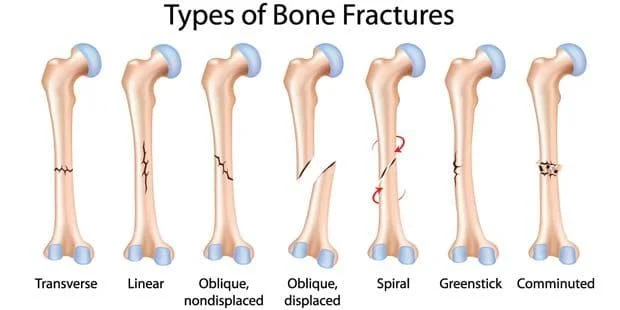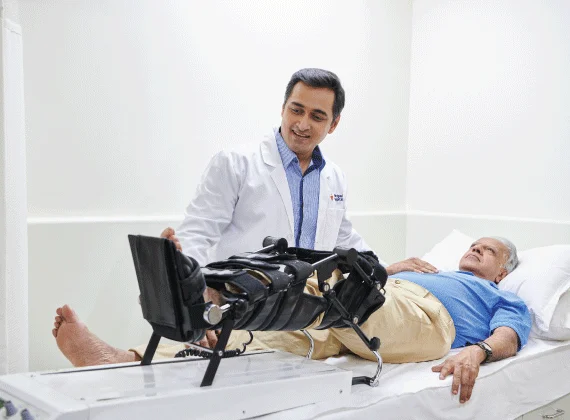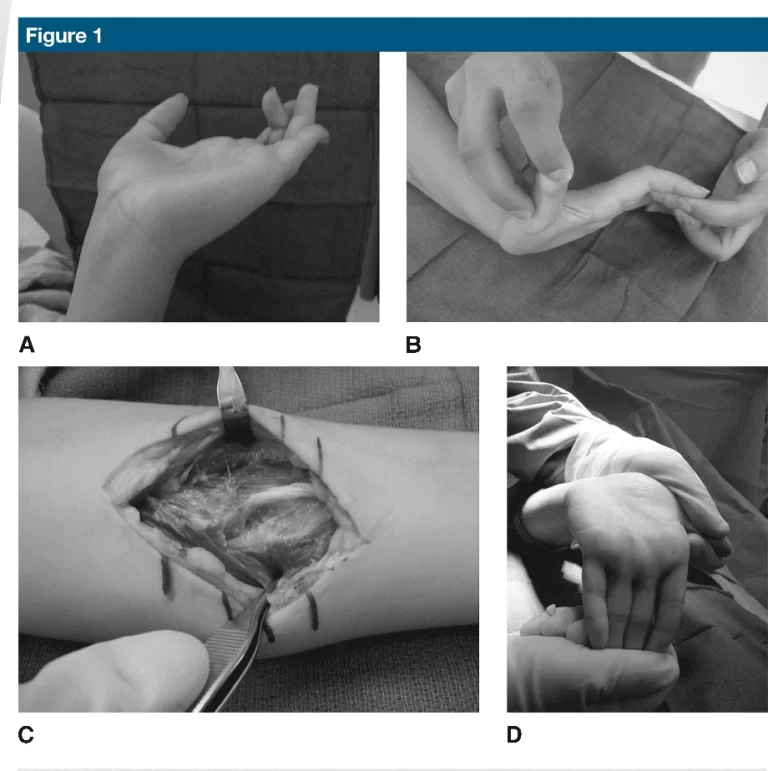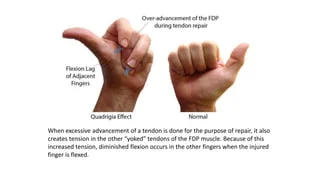Comminuted Fracture
Introduction:
A Comminuted Fracture is a type of bone fracture characterized by the shattering or splintering of the affected bone into multiple fragments. Unlike simple fractures where the bone may break into two separate pieces, comminuted fractures involve the bone breaking into three or more pieces. This type of fracture is often the result of high-energy trauma, such as a severe impact or crushing force.
Comminuted fractures can occur in various bones throughout the body, but they are commonly associated with long bones, such as the femur, tibia, and humerus. The severity of comminuted fractures can vary, ranging from a few small bone fragments to extensive splintering, which can pose challenges for treatment and healing.
Fistulas comminuted are uncommon. This is due to the fact that they stem from serious traumas that, fortunately, the majority of people never encounter. One can have closed or open fractures. An open or complicated fracture is what medical professionals refer to when skin breaks free from the wound. Your fracture may be closed or simple if your skin does not break.
The position and extent of the fracture can have a significant impact on how severe a comminuted fracture is. The bone may break into bigger fragments in certain situations, while it may break into numerous little pieces in others. The ideal course of treatment will also depend on how severe the fracture is.
Due to the complexity of comminuted fractures, treatment often requires careful assessment by medical professionals, including orthopedic surgeons. Surgical intervention may be necessary to align and stabilize the bone fragments using methods like internal fixation with plates, screws, or rods. The recovery process for comminuted fractures can be prolonged, and rehabilitation efforts are crucial to restore function and mobility.
Many persons who suffer severe injuries may need rehabilitation and spend many days in the hospital. If necessary, surgery can be performed as an outpatient to address minor injuries. Following surgery, a splint will be placed, and it will typically remain in place for two weeks or until the patient sees me in the office. After removal, we can resume using a splint as we pursue recovery.
A comminuted fracture: what is it?
A bone with at least two fractures is referred to as having a comminuted fracture. You can get these fractures in any long or large bone in your body. Among the most typical are:
- Femur (thigh).
- Tibia (shin).
- Fibula (calf).
- Humerus (upper arm).
- Radius and ulna (forearm).
- Clavicle (collarbone).
- Skull
Serious traumas like automobile accidents or falls from heights are nearly invariably the cause of comminuted fractures. Larger bones are particularly seriously affected, and surgery is frequently required to fix them. Smaller bones can occasionally sustain comminuted fractures that mend without the need for surgery. Which bones are broken and what caused them will determine how long it takes you to heal. If the fracture happened in one of your longer or more massive bones, it usually takes up to a year for most people to heal, more if surgery is necessary.
Who gets comminuted fractures?
Like all bone fractures, comminuted fractures can happen to anyone. This is particularly valid given that they stem from severe experiences. Since nobody can ever know when or how they would be involved in an accident, comminuted fractures could happen to anyone.
How can you recognize the signs of a comminuted fracture?
Serious symptoms of the trauma that caused the fracture are also likely to occur if you have a comminuted fracture. Your other injuries will determine your symptoms. However, generally speaking, comminuted fracture symptoms can include:
- Severe pain.
- Being unable to move a body portion that is ordinarily mobile.
- A notably discolored or abnormally positioned body component is seen.
- Looking through your skin to see your bone.
- Growing.
- Tearing.
- Feeling tingly or numb
- difficulty in moving the limb
- limited movement
What is the cause of a comminuted fracture?
Comminuted fractures are typically caused by large impact injuries, which occur when something strikes your body with great force, generally at fast speeds.
Comminuted fractures are most usually caused by trauma. Because bone requires a lot of effort to shatter in numerous locations, the trauma that results in a comminuted fracture is usually severe, as in a car accident or a fall from a considerable height. Individuals with bone-weakening disorders, such as osteoporosis, are more prone to sustain a comminuted fracture after a less-forceful shock.
- Car accidents: One of the primary causes of comminuted fractures is a car collision. A high-speed accident can subject the body to severe force, resulting in many bone fractures.
- Falls: Falls from great heights, such as from a ladder, stairwell, or balcony, can result in comminuted fractures. Because their bones are weaker, the elderly are especially vulnerable to this type of injury.
- Sports injuries: Athletes are at risk of incurring comminuted fractures as a result of the high-impact nature of several sports. Football, rugby, and skiing are all sports that can result in comminuted fractures.
- Physical violence: Assault and other forms of physical aggression can result in comminuted fractures. Domestic violence victims frequently suffer from these types of fractures.
- Osteoporosis: Osteoporosis is a disorder that causes the bones to become soft and brittle, increasing the risk of breakage. Even a simple fall can result in a comminuted fracture in rare situations.
- Pathological fractures: occur when a bone is weakened due to an underlying disorder, such as bone cancer or osteomyelitis. This sort of fracture can cause bone fragmentation and numerous fractures.
Various forms of compound fractures:
Comminuted fractures can take many forms, and they are categorized according to the location of the fracture and the degree of bone fragmentation. The following are the prevalent kinds of comminuted fractures:
Intra-articular comminuted fracture:
- This kind of fracture happens when a bone shatters into many pieces that pierce through a joint.
- This is a serious injury that may result in long-term disability and joint damage.
- Surgery is frequently necessary for intra-articular comminuted fractures in order to straighten and stabilize the broken bone pieces and stop the joint from getting worse.
Segmental comminuted fracture:
- This kind of fracture occurs when a bone breaks into two or more pieces, with a portion of the bone that is totally separated from the main portion of the bone.
- Take a comminuted skull fracture, for instance.
- Treatment for this kind of fracture might be difficult because reattachment surgery may be needed for the detached portion.
Butterfly comminuted fracture:
- This kind of comminuted fracture is characterized by the breaking of the bone into two or more pieces that resemble the wings of a butterfly.
- This kind of fracture typically affects the tibia or femur.
Comminuted spiral fracture:
- This kind of fracture happens when the bone is twisted, and the fracture line follows the length of the bone in a spiral pattern.
- Because it may be difficult to precisely align the broken bone fragments, treating this kind of fracture can be especially tough.
Segmental stellate fracture:
- A type of comminuted fracture known as a segmental stellate fracture occurs when the bone breaks into several pieces that radiate out from a central location.
- This kind of fracture frequently happens when the bone is struck directly, as in a car accident or a fall from a height.
Stage of communicative fracture:
When recovering from a comminuted fracture, there are various stages involved, such as:
The phase of inflammation:
- This stage starts as soon as the fracture and lasts for a few days.
- White blood cells are sent to the fracture site by the body during this phase in order to clear debris and aid in the healing process.
The phase of reparation:
- This stage starts two weeks after the fracture and can last for several months.
- The body creates a callus, a mass of tissue that stabilizes the fracture and aids in healing, during this period.
The phase of remodeling:
- This stage lasts for at least a year and starts a few weeks to months following the fracture.
- In this stage, the bone gradually regenerates new bone tissue in lieu of the callus, restoring its strength and functionality.
Comminuted Fracture Diagnosis:
Your comminuted fracture will be diagnosed by your doctor using tests or scans. They may employ:
X-ray:
- This examination employs energy beams to photograph your bones and other body parts.
- Your bones will appear as white areas in the photograph.
- If your bone is fractured, it will appear as a darker patch on the X-ray.
MRI:
- These scans take photographs of the inside of your body from the outside using a big magnet and a computer.
- Your doctor will examine these images on a computer monitor to look for fractures.
The CT scan:
- This scan may be used by your doctor to build horizontal and vertical images of your body.
- These scans are more detailed than normal X-rays.
What is the treatment for comminuted fractures?
If one of your long or large bones is damaged, you’ll need surgery to fix a comminuted fracture. There are several procedures for repairing comminuted fractures, and which one your surgeon selects will depend on your injuries, the bone that is fractured, and any additional issues that have happened as a consequence of your incident.
Your surgeon will realign (set) your bones to their proper position before securing them so they can heal and grow back together. Internal fixation is a procedure in which your surgeon inserts pieces of metal into your bone to hold it in place while it heals. Internal fixation procedures include the following:
Rods:
- A rod that runs from top to bottom through the center of your bone.
Plates and screws:
- These are metal plates that are screwed into your bone to keep them in place.
Pins and wires:
- Pins and wires are used to secure bone fragments that are too tiny for other fasteners.
- They are often used in conjunction with rods or plates.
- After a comminuted fracture, you’ll most likely require pins and wires to hold the pieces of your bone together.
Fixation on the outside:
- You may require an external fixation.
- This is frequently a short-term fix that stabilizes your fracture while your other ailments heal.
- Your surgeon will insert screws on either side of the fracture inside your body, which will then be connected to a brace or bracket wrapped around the bone outside your body.
External fixation:
- External fixation is sometimes recommended as a first step before more invasive operations to repair your comminuted fracture.
Internal fixation:
- If you have several injuries, your body may require time to recover in order to tolerate internal fixation surgeries.
Grafting of bone:
- If your comminuted fracture is substantially displaced or your bone isn’t healing as well as it should, you may require bone grafting.
- To repair your damaged bone, the surgeon will introduce more bone tissue.
- Following that, they’ll usually do an internal fixation to hold the parts of your bone together as it regrows.
- Bone grafts can be obtained from a variety of sources, including:
- Internally from another part of your body, typically the top of your hip bone.
- An outside contributor.
- It’s a man-made replacement piece.
Immobilization:
- Using a cast or splint to immobilize the injured area can help stabilize the fracture and accelerate recovery.
Rehabilitation:
- Exercises for rehabilitation can assist in regaining the damaged area’s strength, flexibility, and function.
Comminuted fracture surgeries are outpatient treatments, which means you may be able to leave the hospital the same day. However, the trauma that produced your comminuted fracture is likely to have caused further injuries that will necessitate your hospitalization.
The area of your body with the shattered bone will be immobilized following surgery. Depending on where this is, you may require a brace, splint, or cast before you can begin putting weight on it or using it as you did before your injury.
Following surgery stabilization:
- The lengthy portion of your recovery truly begins after your fractured bone is surgically stabilized.
- Comminuted fractures can require a year or more to heal, a far longer healing time than for less severe breaks.
- Your injured bone must be immobilized with a cast, brace, or splint following surgery.
- Your discomfort, bruises, and swelling may be noticeable for a few weeks.
- Depending on how you fractured your bone, you might require continuous inpatient treatment for trauma.
- Simply be aware that healing from a comminuted fracture takes time, and it can also require healing from other injuries.
- When dealing with this kind of injury, be ready to allow yourself as much time as necessary to heal completely.
Tips for managing comminuted fractures at home:
Here are some pointers for dealing with the symptoms of a comminuted fracture at home:
- Do not use or put weight on the shattered bones’ afflicted area.
- Use over-the-counter pain relievers but avoid ibuprofen and other nonsteroidal anti-inflammatory drugs (NSAIDs), which can raise your risk of internal bleeding.
- To reduce pain around swollen areas, apply a cold compress.
- Attend any physical treatment recommended by your doctor in order to regain as much function as possible from the damaged area.
Risk factors for communicated fracture:
Factors that increase the likelihood of a comminuted fracture include: Among the risk factors that may enhance the likelihood of getting a comminuted fracture are:
Age:
- As people get older, their bones weaken and become more fragile, leaving them more prone to fractures.
Gender:
- Women are more likely than men to develop osteoporosis, which increases the risk of fractures.
Lifestyle:
- People who smoke, drink too much alcohol and eat poorly are at a higher risk of getting osteoporosis and fractures.
Medical conditions:
- Medical disorders, such as cancer and diabetes, can weaken bones and increase the likelihood of fractures.
Prevention:
How can I lower my chances of a comminuted fracture?
To lower the chance of injury during your daily activities, follow these steps:
- Wear your seatbelt at all times.
- Wear the appropriate safety equipment for all activities and sports.
- Keep your workspace and house clutter-free to prevent trips and falls for you and other people.
- To access anything around the house, always use the correct tools or equipment.
- Never put your feet on chairs, tables, or countertops improperly.
- Maintain optimal bone health by following a diet and activity regimen.
- If you’re over 50 or have a family history of osteoporosis, talk to your doctor about getting a bone density test.
- Because comminuted fractures occur rapidly, it is often impossible to totally prevent them.
- Because you can’t forecast when you’ll be injured, there’s little you can do to avoid a comminuted fracture other than take basic precautions.
- If you require a walker or a cane to assist you, you should never walk without them and exercise extreme caution on uneven surfaces.
Physical Therapy (PT):
- Your doctor may recommend physical therapy to assist in treating your fracture.
- This is common when the cast is removed to let you regain strength and range of motion.
- You can restore your usual range of motion, flexibility, and muscle strength with the help of several workouts.
What Safety Precautions Are Required When Working Out?
- Preserving good posture is crucial when exercising.
- Avoid doing intense workouts.
- Completely warm up before working out.
- When you have an acute ache while exercising, discontinue.
- Strike the Right Balance
- Do not dehydrate.
- In between sets, take a short break.
Recovery:
- Fractures might take many weeks to months to heal, depending on the severity of the injury and how well you follow your doctor’s instructions.
- The pain usually subsides before the fracture becomes strong enough to withstand the demands of daily activity.
- Even after your cast or brace has been removed, you may need to continue restricting your movement until the bone has solidified enough to allow regular activity.
- You will most likely lose muscle strength and range of motion in the affected area while recovering.
- Certain exercises will assist you in regaining normal muscular strength, joint motion, and flexibility.
Summary:
- A severe break in which the bone fractures into at least three pieces is known as a comminuted fracture. Long bones, such as the arms and legs, are more susceptible to comminuted fractures. Still, they can also occur elsewhere, such as in the ribs.
- A comminuted fracture might require months to heal, and physical therapy, casting, and surgery are common treatments. Discuss what to anticipate from your healing process after a fractured bone with your healthcare physician.
- The most prevalent causes of fractures include physical trauma, misuse, and medical disorders like osteoporosis. Furthermore, a person’s bones usually deteriorate in late maturity. Their chance of breaking a bone is increased by this.
- The majority of fractures can be healed by the body, but in most cases, surgery is required to retain the shattered bones in place. These procedures can include surgical screws and plates as well as external casts and splints.
- Due to the ongoing development of their bones, children are more susceptible to consequences from comminuted fractures.
FAQS
A comminuted fracture: what is it?
A bone that has fractured in three or more places is called a comminuted fracture. A bone is often regarded as severely comminuted if it has more than four fractured points. Unlike other forms of fractures, such as a greenstick fracture, which occurs when a bone cracks but does not completely separate, comminuted fractures involve a complete fracture of the bone.
What is the duration of recovery following a comminuted fracture?
As multiple breaks are mending simultaneously, comminuted fractures may heal more slowly than simpler fractures. The healing time for these kinds of fractures can reach a year, contingent on the intricacy of the fracture and your tolerance to surgery, physical therapy, and other interventions. It could take months or years for the bone to recover completely. Reliable Source since bone grows back and becomes functional again.
What separates a segmental fracture from a comminuted fracture?
When the bone has at least two full fracture lines, a “segment” of the bone is broken between the two lines, leading to a segmental fracture. When three or more fragments of bone break off from the parent bone, it is known as a comminuted fracture. A distinct bone section is not usually caused by the fracture lines. It is possible to comminute some segmental fractures, though.
Is surgery required in all cases of comminuted fractures?
Depending on the location and severity of the fracture, surgery can be required for severe comminuted fractures.
Can a fracture that has comminuted heal on its own?
A comminuted fracture is not likely to heal on its own without medical attention. Surgery or immobilization is typically required to accelerate healing and stop more damage.
Can I resume my regular activities following a comminuted fracture?
Following a comminuted fracture, returning to regular activities is usually achievable. However, the degree and location of the fracture will determine how long it takes to heal completely and resume regular activities.
Are there potential long-term problems from a comminuted fracture?
A comminuted fracture may occasionally result in chronic discomfort, arthritis, or restricted mobility as long-term consequences. To keep an eye out for issues, it’s critical to adhere to the doctor’s aftercare recommendations and follow up on scheduled visits.
Can anyone avoid getting a comminuted fracture?
Sometimes there is no way to stop a comminuted fracture. But there are a number of things you can do to lower your chance of breaking a bone, like eating a balanced diet, working out frequently, and wearing safety equipment when engaging in physical activity.
When may I begin doing activities for rehabilitation following a comminuted fracture?
The degree and location of the fracture will determine when rehabilitative exercises should be started. It’s crucial to adhere to the doctor’s recommendations and hold off on starting rehabilitation exercises until the fracture is stable enough.
Will recovering from a comminuted fracture require physical therapy?
After a comminuted fracture, physical therapy is typically advised in order to assist the damaged area to regain strength, flexibility, and function. The location and severity of the fracture will determine how long and how hard physical treatment is administered.
What Causes Comminuted Fractures?
A person must use significant force to sustain a comminuted fracture. This kind of break, for instance, can result from a catastrophic fall or auto accident.
What is the severity of a comminuted fracture?
A severe break in which the bone fractures into at least three pieces is known as a comminuted fracture. Long bones, such as the arms and legs, are more susceptible to comminuted fractures.
What is a comminuted fracture’s piece count?
The comminuted fracture is among the most difficult kinds of bone fractures to cure. This is the fracture where the bone breaks into three or more pieces. It is usually the result of a high-force trauma or accident, like a car accident, a sports injury from a collision, or a fall from a height.
How should a comminuted fracture be treated?
Surgery is most likely required for someone with a comminuted fracture. After that, to prevent the bone from moving while it heals, they will need to wear a cast or splint for a period.
What is the duration of care for a comminuted fracture?
Comminuted fractures can require a year or more to heal, which is a far longer healing time than for less severe breaks. Your injured bone must be immobilized with a cast, brace, or splint following surgery. Your discomfort, bruises, and swelling may be noticeable for a few weeks.
Who has the best chance of receiving a comminuted break?
People who suffer from bone-weakening disorders like osteoporosis are more susceptible to comminuted fractures from less forceful impacts.
Does a fracture heal itself?
Broken bones often mend and regain strength, although this isn’t always the case. Non-union, or fractured bones that do not mend back together, is a condition that can lead to numerous issues. The following actions can aid in the proper healing of shattered bones: Avoid vaping and smoking cigarettes.
A comminuted fracture: is it hazardous?
Larger bones are particularly seriously affected, and surgery is frequently required to fix them. Smaller bones can occasionally sustain comminuted fractures that mend without the need for surgery. Which bones are broken and what caused them will determine how long it takes you to heal.
How may a comminuted fracture be fixed by a doctor?
In order to allow your bones to mend and grow back together, your surgeon will realign (set) them to their proper position and then secure them in place. Typically, they carry out an internal fixation, in which your surgeon places small metal bits into your bone to stabilize it while it heals.
What causes comminuted fractures the most frequently?
Serious traumas like automobile accidents or falls from heights are nearly invariably the cause of comminuted fractures. Larger bones are particularly seriously affected, and surgery is frequently required to fix them. Smaller bones can occasionally sustain comminuted fractures that mend without the need for surgery.
How is a comminuted fracture diagnosed?
X-rays:
An X-ray will demonstrate the extent of your bone injury and confirm any comminuted or other fractures. Your healthcare professional may employ magnetic resonance imaging (MRI) to obtain a comprehensive image of the damage to your bones and the surrounding tissue. This will also display the tissue surrounding your bones.
What is another name for a comminuted fracture?
A comminuted fracture is one type. Your bone fractures into three or more fragments, resulting in this damage. One can have closed or open fractures. An open or complicated fracture is what medical professionals refer to when skin breaks free from the wound.
How is the comminuted handled?
formerly, external skeletal fixation and closure reduction have been used to treat comminuted fractures. An excellent substitute for traditional methods in the treatment of comminuted mandibular fractures is titanium mesh.
References
- Professional, C. C. M. n.d. Comminuted Fracture. Cleveland Clinic. https://my.clevelandclinic.org/health/diseases/22252-comminuted-fracture. In-Text Citation: (Professional, n.d.)
- Benisek, A. 2021, February 24. What Is a Comminuted Fracture? WebMD. https://www.webmd.com/a-to-z-guides/comminuted-fracture-overview. In-Text Citation: (Benisek, 2021)
- Jewell, T. 2023, September 13. All About Comminuted Fractures. Healthline. https://www.healthline.com/health/comminuted-fracture. In-Text Citation: (Jewell, 2023)
- Burch, K. 2023, March 13. What Is a Comminuted Fracture? Verywell Health. https://www.verywellhealth.com/comminuted-fracture-7153310. In-Text Citation: (Burch, 2023)
- Fractures (Broken Bones) – OrthoInfo – AAOS. n.d. . https://orthoinfo.aaos.org/en/diseases–conditions/fractures-broken-bones/. “Orthodontia – Fractures (Broken Bones) – AAOS,” n.d., provides the intext citation.
- Singh, P. 2023, September 12. Comminuted fracture Meaning, Symptoms, Causes & Treatment. Medanta. https://www.medanta.org/pillar/comminuted-fracture-meaning-symptoms-causes-treatment. In-Text Citation: (Singh, 2023)
- Comminuted Fracture Recovery: What to Expect: Michael L. Blackwell, MD: Orthopaedics & Sports Medicine. n.d. Michael L. Blackwell, MD. https://www.orthosportsmedtx.com/blog/comminuted-fracture-recovery-what-to-expect. In-Text Citation: (“Comminuted Fracture Recovery: What to Expect: Michael L Blackwell, MD: Sports Medicine & Orthopaedics, n.d.
- Modi, J. 2022, December 14. Comminuted vs. Compound Fractures: What’s the Difference? Buzzrx.com. https://www.buzzrx.com/blog/comminuted-vs-compound-fractures-what-s-the-difference. In-Text Citation: (Modi, 2022)








One Comment